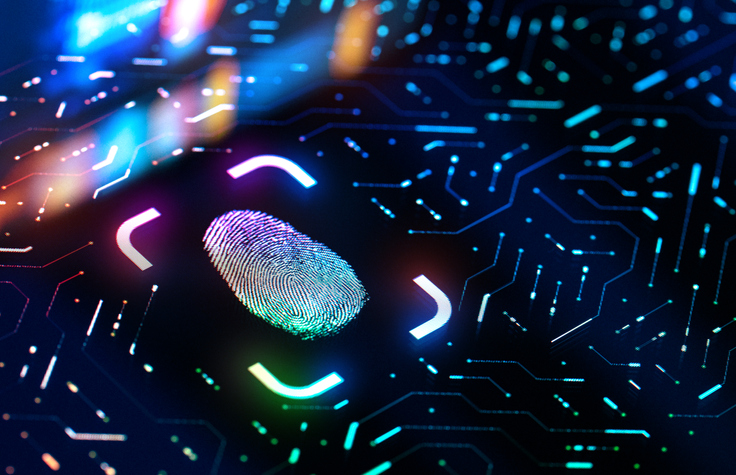Article
How biometrics are improving banking
22 Jan, 20225mins
As advancements in technology continue to develop, Biometrics is rapidly emerging as the identification method of choice for many banks in their secure authentication processes.
What is Biometrics
Biometrics is a way of identifying and authenticating individuals through their unique biological characteristics, such as fingerprint matching, face or voice recognition or even vein patterns.
There are three recognised forms of authentication, something you know (e.g. a password), something you have (e.g. an ID card) and something you are (Biometrics). Biometrics is considered the most reliable and the most difficult to replicate of the three.
Why Biometrics
Fraud remains one of the biggest problems financial institutions face in the modern world. Banks are constantly looking for the best way to reduce fraud, minimise economic loss and give their customers the fastest, most secure and convenient banking experience possible.
Biometrics can offer a level of security that is far superior to password protection as it can’t simply be guessed or stolen. This provides customers with peace of mind and can offer banks a more reliable KYC (know your customer) procedure.
In addition, biometric authentication can be more convenient for customers, as is the need to remember information such as PINs or log in details, making the process quicker and easier. Recent research by iProov showed that consumers in the USA, Canada, the UK, Italy, Spain and Australia all said that “speed and convenience were the two biggest plus points for using face or fingerprint ID for banking apps”.
Many banks also use multi-factor authentication for added security, combining a biometric measurement with another piece of data, such as a time-sensitive OTP sent to your mobile phone.
Of course, banks need to get the balance right to avoid irritating customers with a lengthy or confusing process, especially during onboarding, to ensure that individuals don’t just give up and choose another provider.
How is Biometrics being used?
Voice recognition is becoming an increasingly popular way for banks to verify identity. It works by recording an individual’s unique and identifiable phonetic features and then matching that recording in real-time when authentication is needed.
HSBC UK adopted voice authentication in 2016, and the bank claims that the technology has prevented nearly £1 billion of fraud, with the rate of attempted fraud down by 50% year-over-year as of May 2021.
NatWest also embraces Biometrics, using real-time facial recognition for new account openings. There has been a high demand for virtual account opening, especially during Covid, so having a method of onboarding new customers with a ‘selfie’ is a convenient and contact-free process for clients, as well as a deterrent for fraudsters with reports that NatWest has seen a decrease in the number of fraudulent applications as a result of implementing the biometric technology.
What are the risks?
While Biometrics can certainly offer increased protection from criminal activity, that’s not to say the fraudsters aren’t trying to find ways around biometric checks. Using techniques such as ‘artefact attacks’, where a picture or video is presented to the camera or microphone to authenticate identity falsely, can bypass some systems.
Equally, there is a more general issue that, like any technology, Biometrics are not 100% reliable. It is possible to generate ‘false rejections’ in cases where automated systems fail to recognise a genuine customer due to a technical issue correctly or physical change in biometric state, e.g. the individual has a cold and their voice sounds different, or their fingerprints have faded as they have grown older.
The Future of Biometrics in Secure Transactions
Although there may be risks, it appears that Biometrics still emerges as the most reliable and secure way to identify customers. Therefore, its applications are only likely to continue to grow as time goes on.
Recent research conducted by Juniper predicts that Biometrics will be used to secure $2.5 trillion in mobile payment transactions by 2024, a nearly ten-fold increase over current transaction volumes and a Worldpay commissioned survey of 2019 showed that 62% of Generation Z respondents would be happy to ditch their payment cards and move to biometric identification at the point of sale.
Recently, tech giant, Apple, has been granted a new US patent to incorporate Touch ID into the Apple TV remote control, allowing users to authenticate transactions, such as movie rentals through the Apple store, with a fingerprint scan.
So, it looks like biometric identification is here to stay, and that should be a good thing for consumers and banks alike, speeding up processes, increasing security and streamlining transactions. Still, as technology develops, fraudsters will continue to look for ways to beat the system, and banks will have to remain vigilant for emerging techniques.
If you’re thinking about your future in banking, technology or any of our specialist areas, talk to McGregor Boyall today and find out how we can help you make your next career move.


